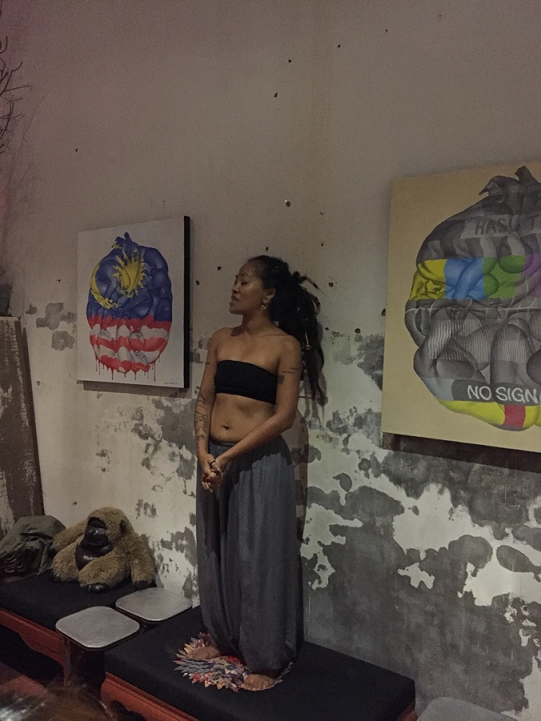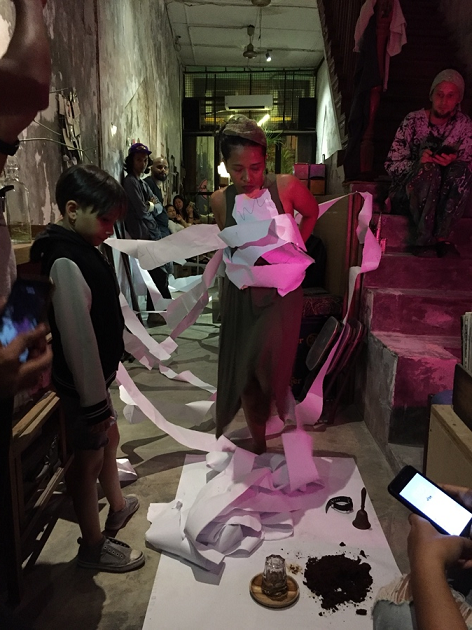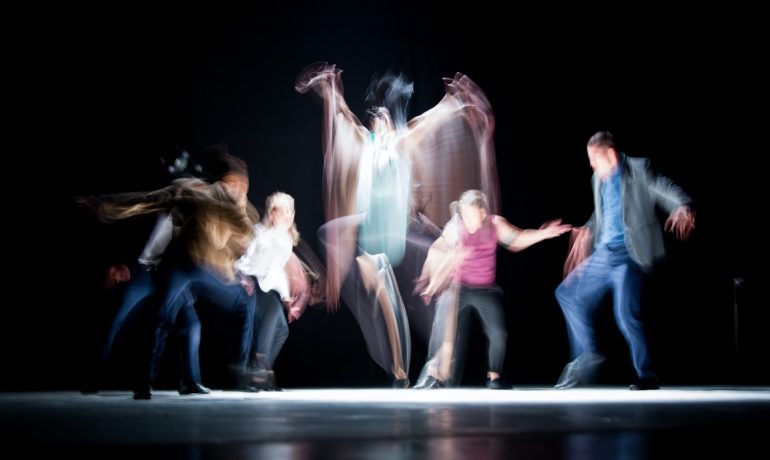What constructs our identities as Malaysians? In this article, we look at the perception of one’s identity today through the works of local performance artists.
By Clara Ling
Malaysia is a society made up of many different cultural backgrounds, each embracing different values and belief systems. The political encouragement for a singular Malaysian identity has willingly churned performance artists into repossessing, owning, and modernising their ethnic traditions.
While the study of identity centred on nation building in the past, its definition has undergone certain changes since Malaysia became an independent nation. How an individual perceives their own perspectives of the world will result in the way that particular individual comprehends their surroundings—whether it is related to the past, present, or the future. The political efforts of Malaysia in the 1970s to formulate its own vision of national identity created an avenue for many Malaysians to approach this particular matter. But up till today, the trials and tribulations surrounding these processes confirms that the Malaysian society in general is still in search of a national identity.
The Quest of Identity Through Performance
Identity is mainly understood as a corset of compulsion but it has also become an engine of creative impulse for artistic activities. While the practice of art and performance art has been evolving throughout the years, especially in the context of identity, there have been incidents where artists themselves find it difficult to define who they actually are. In the early years of Malaya’s nation building before the federation was enlarged by accession of Singapore, Sabah, and Sarawak in 1963, there was an urgent endeavour to anchor the culturally and ethnically diverse population in common grounds and to establish a strong ingredient for the Malaysian identity and to unify Malayans. Identity has been an object of discussion since then, with the quest for identity being revisited by artists over and over again.
Mislina Mustaffa’s 2017 Hasutan performance provoked the audience to rethink who we are, what we may be. The performer invited her audience to participate in her performance, where those present were asked to move to the right if the answer was “yes” and to the left if the answer was “no”. Throughout the 20-minute performance, Mislina asked her audience to reconsider what they truly were—“Look at this body. Is this the body of an animal?”, “Is this the body of a woman?”, “Is this the body of a Malay?”, “Is this the body of a Malaysian?” Mislina addressed the matter of identity in a powerful way by drawing on her experiences as a Malaysian.

Mislina Mustaffa during her Hasutan performance.
In an interview, Mislina Mustaffa comments, “Am I a human being? Yes? No? Could it be that I am an animal? Is this the body of a man? Is this the body of a human being? Is this the body of a woman? Can this body be anything at all? This body is a man, is a woman, is an animal, is a teacher, is a nurse, is a mother, is a sister, is a tree, is a Malay, Muslim, woman, a Malaysian and can be anything at all.”
The Malaysian identity, as projected in this performance, is more than just “a person’s inner essence”. It is the matter by which individuals discover and assimilate into their own groups of similar people, culture, and experiences. Having said that, the Malaysian identity comprises layers of influences from cultures in a history of changing geographical spaces; we Malaysians are in fact an embodiment of different mythological sources, behavioural patterns, cultural manifestations, and visions over centuries. And this no doubt makes us who we are today—Malaysians.
The Dilemma of Self and Identity as a Construct
The term identity captures the dilemma of self—it describes, and seems to explain, the contradictions of living in a society that is in constant change. Therefore, the term is not just limited to how an individual is viewed in their society according to race, but it is a limitless view of individual self-portrayal and perception. The Malaysian identity perhaps also encompasses an individual’s change in values and practices due to changes in society’s systems.
Another performance that reflected this issue was Intan Rafiza’s Boundaries in 2017, an exemplary discussion of the knowledge of self and the Malaysian identity.
The performer first filled the space with rolls of white paper. Before the 15-minute performance started, Intan passed around a large piece of paper, asking the audience to mark their “territories”. The performance then proceeded with a short introductory ritual using common everyday Malaysian items such as coffee grounds, a watch, a bell, a glass—portraying diversity while representing individuality.
The audiences’ markings were quite interesting—each person marked black dots everywhere, all separated from one another. It was a symbol of how, in the beginning, we were “trapped” or caged on that space. The artist’s every move—from kneeling in the beginning of the performance to covering herself with the rolls of paper to finally breaking through, tearing apart every piece of paper (including the one with the markings)—symbolised how the “boundary” was now broken. There is no longer a “boundary” that sets each individual apart; like the rest, we are now all united.

Intan Rafiza in her Boundaries performance.
The experience of a liberated discourse and narrative; awareness and perception of communal interests; the conscious journey that Malaysians have undergone through historical narratives; the emotional realisation and aesthetically charming advantages of diversity; and the maturity of cosmopolitan, global, and universal values transcends these crusted moulds of what constructs the Malaysian identity.
Mislina Mustaffa adds, “You know and I believe it is in our genetics. Because Malaysia itself, ‘Malaysian’ itself, is a constructed identity. What is Malaysian?”
The Continuous Journey of Shaping the Malaysian Identity
While it may suffice to interpret the concept of identity in a way that is home grown and naturally sprouting, the current Malaysian people’s perception of identity is still an ongoing process. Implementing markers on the foundation of what defines who Malaysians are requires a new self-image—one which is still in the midst of construction.
“When you go to a certain event, inilah budaya Malaysia (this is Malaysian culture), inilah (this is) Malaysian art, all you see is a little fusion of a little bit of Malay culture, a little bit of Chinese culture, a little bit of Indian culture, they put together, rojak, fusion, oh! Malaysian culture. It’s all constructed,” Mislina comments. This new self-image of Malaysian identity seems to connect all Malaysians in this complex society to other international citizens of this global world—a quasi-natural democratic process.
Today, regional openness, market competition, international exchange, and liberalisation are the new driving forces that shape who we are as Malaysians. But there may still be an institutionalised identity-restraint that makes the public question: what are our personalised beliefs in national characteristics, what is our own Malaysia-ness like? What does identity mean to us individually?
The artist who performed /Boundaries/ is Intan Rafiza, not Aisyah Baharuddin. An earlier version of this article mistakenly identified the artist. We apologise for the error. Thanks to Ruang Sementara Dua for highlighting the error.
Cover image source: Ahmad Ohdeh on Unsplash
In-article images by Clara Ling
Clara Ling is a writer by day and a creator by night. She has been involved in art writing, research, and publishing after finishing her Masters in Fine Arts.

